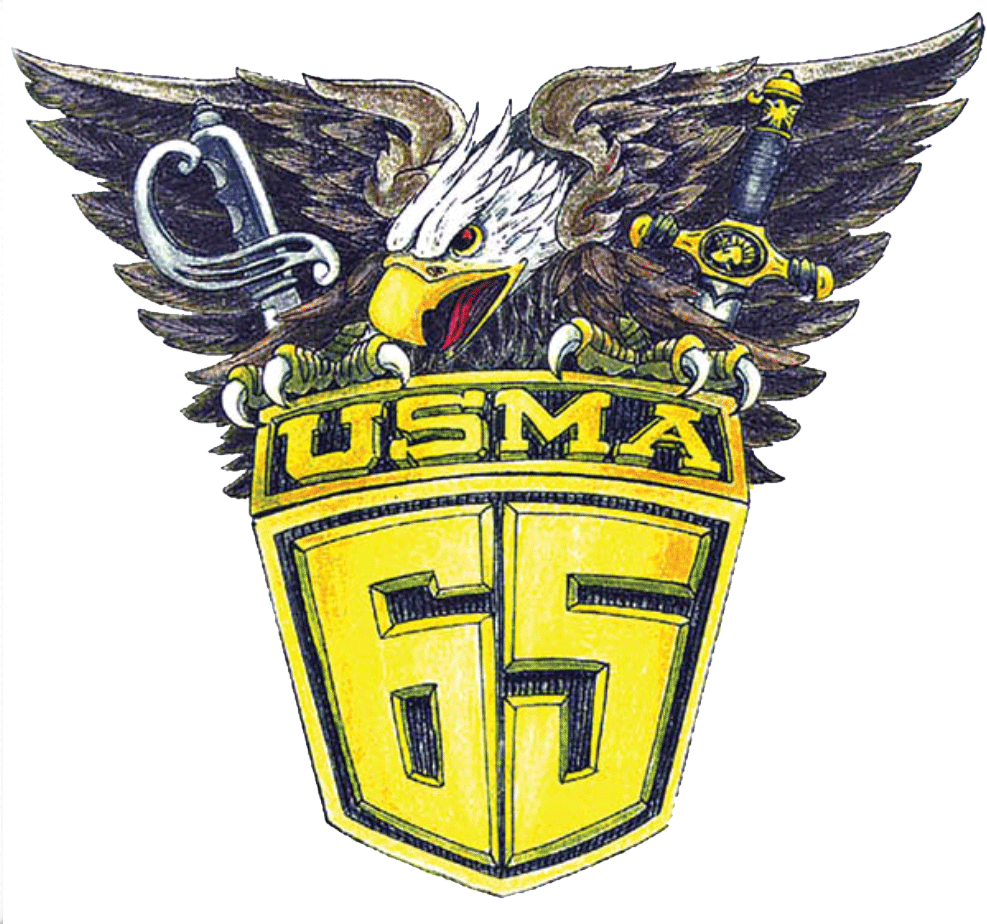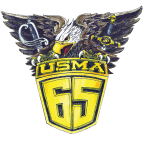Our country was in the middle of World War II when Carl Arvin served his country as a Military Police officer. Carl and his wife Dorothy’s first child, Carl Robert “Bob” Arvin was born in 1943 while he served. Carl and Dorothy would have to live their lives to learn the complete role the military would play in their lives.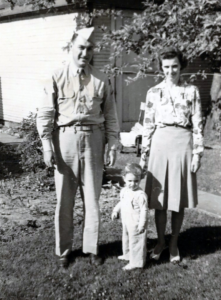
The family moved to Ypsilanti and lived at 907 Pleasant Drive for most of Bob’s youth. Being across the street from Recreation Park, Bob’s youth fit the ideal 1950s stereotype. He was a prize-winning paper boy for the Ann Arbor News while he attended St. John’s Elementary School. Joining Troop 240 of the Boy Scouts of America at St. John’s Catholic Church, Bob became an Eagle Scout and counseled younger scouts at the Bruin Lake Boy Scout Camp.
A neighborhood girl, Merry Lynn Montonye, frequently saw Bob at Recreation Park. According to Merry Lynn, they never became friends because he was “playing with sticks and doing boy stuff.”
When it came time to attend high school in 1957, Bob choose not to attend a smaller private school and moved to Ypsilanti High School where he hoped his talents could be better exhibited. The fit turned out to be perfect for him.
Bob excelled in both team and individual sports. He played varsity football for four years and was the team’s starting quarterback. He wrestled for four years. During his senior year he was the 154-lb State Champion and co-captain when Ypsi High won the State Championship. Wrestling teammate Tino Lambros remembers “the long, cold, and dark school bus trips to Lansing, Battle Creek, Kalamazoo, and other places. “Bob would curl up in those ‘wonderful’ bus seats, pull out a small flashlight and a book and study.”
Among his circle of friends at Ypsi High was that neighborhood girl, Merry Lynn Montonye, who now was captain of the cheerleaders. They dated sporadically, even when the year-older Merry Lynn went off to Duke University.
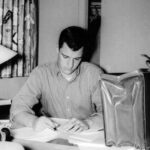 His club activities included four years on the Debate Team and four years with the Forensics Team where “keys” were earned by representing Ypsi High in interscholastic debates or in District speech contests. Two years with the Thespians led to the lead in the school’s senior play. He also spent two years with the school newspaper and his senior year with the yearbook staff.
His club activities included four years on the Debate Team and four years with the Forensics Team where “keys” were earned by representing Ypsi High in interscholastic debates or in District speech contests. Two years with the Thespians led to the lead in the school’s senior play. He also spent two years with the school newspaper and his senior year with the yearbook staff.
Leadership skills were developed by being a Home Room Officer in the ninth grade, Class Officer in the tenth grade, Student Council President in the eleventh grade, and Class President in the twelfth grade. Leadership was broadened by participation in Boys’ State, County Government Day, and the Model United Nations. His high school record was topped by being the Valedictorian for his class and membership in the National Honor Society.
In 1989, classmate Dr. Frank Sayre said “Greatness was in his life. If anyone was destined for major accomplishments, for a national presence, it was Bob Arvin.”
West Point
Upon graduation from Ypsi High, Bob received an honor scholarship from Harvard and scholarships from six other schools. Bob’s mom said, “A Yale scholarship didn’t turn Bob’s head, he was West Point bound.” He became a plebe at the U. S. Military Academy at West Point in July of 1961. The following summer, at Camp Buckner, New York, he distinguished himself by winning both the Triathlon (swimming, cross country and rifle) and “Recondo” competitions. The latter was a hand-to-hand combat pit fight where he was the last man standing among more than 700 classmates.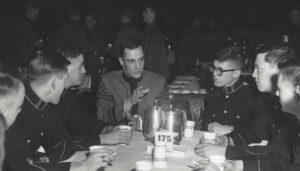
Bob was also a star athlete at West Point, lettering in wrestling during all three of his varsity years. During his senior year, he was elected captain. His coach was instrumental in conceiving the Arvin Wrestling Award which is given annually to “the graduating member of the wrestling team who best exemplifies the qualities of Carl Robert Arvin in the area of leadership, scholarship, and commitment to Army wrestling.”
As in high school, Bob was active in other areas of student life. He was a leader in the Student Conference on US Affairs (SCUSA) at West Point. SCUSA was a four-day conference where students discussed issues facing our country. His editing interest continued as co-editor of the HOITZER student publication. His devotion to his
Catholic faith continued as a member of the Catholic Chapel Choir and a Catholic Chapel acolyte. Both were some of his most cherished times.
After Merry Lynn graduated from Duke, her first teaching job was in White Plains, New York, a short drive from West Point. It was said their relationship ran hot and cold during this time.
It was the responsibility of General Davison, Commandant of Cadets, to select the First Captain and Brigade Com- mander of the Corps of Cadets during their senior year. He remembered, “It was my privilege as Commandant to select Bob to be First Captain. I admired him greatly; he was a concerned, compassionate leader who held the complete respect of his fellow cadets.” As First Captain, Bob hosted Dwight Eisenhower for his Fiftieth Reunion of the Class of 1915 and broke ground for a new campus building with Eisenhower. He later led the Corps of Cadets in President Johnson’s inaugural parade in Washington D.C.
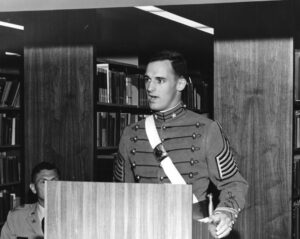 Bob graduated 44th out of a class of 596 in 1961. He received the Pershing Writing Award where graduates are asked to reflect on their four years at West Point and express what West Point meant to them. As the cadet who best exemplifies the traditions of the United States Military Academy and the United States Army, he also received the Association of the United States Army Award. For exhibiting military efficiency, he won the Avarian Award. He was truly honored as a student at West Point. He received further distinction as a finalist for a Rhodes scholarship.
Bob graduated 44th out of a class of 596 in 1961. He received the Pershing Writing Award where graduates are asked to reflect on their four years at West Point and express what West Point meant to them. As the cadet who best exemplifies the traditions of the United States Military Academy and the United States Army, he also received the Association of the United States Army Award. For exhibiting military efficiency, he won the Avarian Award. He was truly honored as a student at West Point. He received further distinction as a finalist for a Rhodes scholarship.
United States Army
After graduation as a 2nd Lieutenant, Bob went to Fort Benning, Georgia in August of 1965 for specialized training. He completed both Ranger and Airborne Jumpmaster schools. He selected the famed 82nd Airborne Division at Fort Bragg, North Carolina as his first assignment. The selection of the 82nd Airborne was indicative of his desire to serve up front with the action.
While in Ranger School, Bob’s West Point friend Chuck Moseley invited Bob and his girlfriend Merry Lynn Montonye to a beach house in Delaware. While driving together, Bob asked Merry Lynn to marry him. They married in Ypsilanti at St. John’s Catholic Church on July 30, 1966. They had nine months together before Bob’s assignment to Vietnam in early 1967 as an advisor in the Military Assistance Command Vietnam
Vietnam
Captan Bob Arvin reported to his advisory detachment, the 7th Vietnamese Airborne Battalion, in May 1967. His West Point classmate Chuck Hemingway was also with the 7th Battalion and was killed in June 1967. Bob was assigned to take his place.
The 7th Battalion was assigned to protect the vital Hue Phu Bai Air Base near the town of Hue (the air base is now Hue International Airport). Hue was in the center of a cluster of towns that included Khe Sanh and Da Nang just south of the DMZ that separated North Vietnam from South Viet Nam.
While serving as advisor to the 7th Battalion, the US Army later officially recognized his value: “Captain Arvin was noted for the inspiration he provided the Vietnamese soldiers and was instrumental in assisting them in successfully accomplishing their missions.”
The pace and intensity of the war picked up in the summer of 1967. According to the US Army, on 5 September 1967 “the battalion was deployed in a three-pronged assault on suspected enemy positions. As the unit approached the objective area, the entire left flank came under intense mortar and small arms fire from Viet Cong bunker and trench complexes located on the rice paddy perimeters. An element on the left flank was overwhelmed by the fierce fire and withdrew, leaving Captain Arvin, his counterpart, and two radio operators alone. Undaunted by the perilous circumstances, Captain Arvin led the group forward to engage the enemy. In doing so, one of the radio operators was wounded. Although wounded, himself, Captain Arvin, with complete disregard for his personal safety, moved through enemy fire to the man and dragged him to a relatively protected location. Returning to the group, he began directing repeated armed helicopter gunship strikes as all elements of the battalion now engaged the enemy. Then, heedless of the increasing volume of enemy fire, Captain Arvin established a landing zone and supervised the evacuation of the wounded. Refusing evacuation himself, he returned to the front to continue to advise and assist in the conduct of the battle. As a direct result of Captain Arvin’s indomitable fighting spirit, positive leadership, and calm courage throughout the hours-long battle, the insurgents were forced from their positions and the 7th Battalion was able to secure the objective. Captain Arvin’s conspicuous gallantry in action was in keeping with the highest traditions of the United States Army and reflected great credit upon himself and the military service.”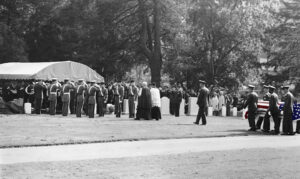
Following a brief hospitalization, Bob returned to his battalion which was preparing to clear enemy forces from the air base. On 8 October 1967, “Bob’s unit was completing a sweep of a suspected enemy base when an entrenched regiment was engaged.” Again, according to the US Army, “Captain Arvin was accompanying the battalion in a sweep of suspected enemy positions when the unit came under intense hostile mortar and automatic weapons fire. As the volume of enemy fire increased, Captain Arvin called for helicopter gunships to support the attacking Airborne soldiers. Realizing that the battalion was facing a determined enemy, Captain Arvin left his relatively safe position and raced through fireswept fields to a forward position where he expertly began directing the gunships on target. With enemy activity temporarily suppressed, the battalion continued to move forward until it was resubjected to punishing mortar and small arms fire. Once again Captain Arvin valiantly and in full view of enemy gunners, moved through the fire to a forward vantage point. There, as fighting raged about him, he directed extremely accurate, close range gunship passes onto enemy positions. As a direct result of Captain Arvin’s unremitting attention to duty, resolute courage, and superb direction of ground forces and supporting aircraft, a strong and determined enemy was forced to flee in defeat. Captain Arvin’s conspicuous gallantry in action was in keeping with the time-honored traditions of the United States Army and reflected great credit upon himself and the military service.”
In moving forward with his Vietnamese counterpart, Bob was mortally wounded by small arms fire and died on the field of battle. By the request of General William Westmoreland, Bob was days away from being transferred to Saigon as one of his staff.
Epilogue
Arvin’s body was returned to Ypsilanti to lie in state in St. John’s Church, the first layman to do so there and, two days later, a Catholic funeral mass was conducted. His school and Boy Scout life began in the same church that saw the end of his life.
Arvin was buried at West Point on 17 October 1967 with military honors. Mourners included wife Merry Lynn, parents, brother David, Ypsilanti and West Point classmates, West Point wrestling team, 82nd Airborne members, and the Academy Superintendent.
For his engagement with the enemy on 5 September, Bob was posthumously promoted to Captain and awarded a Silver Star for gallantry in action and a Purple Heart for his wounds. For the engagement on 8 October, he was awarded a second Silver Star Oak Leaf Cluster for gallantry and a Purple Heart as a result of being mortally wounded.
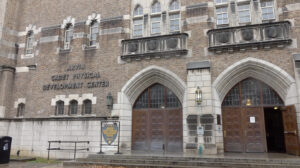 Our Vietnam veterans were not welcomed home like veterans of earlier wars but, on 25 February 1989, West Point did their part to keep their memories alive: the cadet gym was officially dedicated and renamed the Arvin Gymnasium in honor of Bob. West Point follows criteria requiring athletic facilities to be named after graduates who distinguished themselves in a sport related to the facility and had fallen in battle while in the prime of life. Graduates back to the founding of the Academy in 1802 were eligible.
Our Vietnam veterans were not welcomed home like veterans of earlier wars but, on 25 February 1989, West Point did their part to keep their memories alive: the cadet gym was officially dedicated and renamed the Arvin Gymnasium in honor of Bob. West Point follows criteria requiring athletic facilities to be named after graduates who distinguished themselves in a sport related to the facility and had fallen in battle while in the prime of life. Graduates back to the founding of the Academy in 1802 were eligible.
A $97 million 495,000-square-foot addition to the 1910 cadet gymnasium was completed in 2005.
The complex was rededicated on 9 September 2005 as the Arvin Cadet Physical Development Center. The ceremony was part of the 40th Reunion of West Point’s Class of 1965. That class lost twenty-five members in Viet Nam. Like Eisenhower, Sherman, Lee, MacArthur, Pershing, and Grant, the name Arvin on a West Point building honors a military hero from the academy.
Frankenmuth resident Stan Bozich saw the need to tell the story of Michigan’s military heroes in 1987 with the construction of the Michigan Military Museum in his home town. Identifying Arvin as one of Michigan’s heroes, he asked the family for some of Bob’s military possessions for an Arvin display and they gladly agreed.
Arvin is memorialized locally as well. On 15 June 2002, the Ypsilanti Veterans of Foreign Wars Post 2408 dedicated their post to Bob. It is now and will forever be called the “C. Robert Arvin VFW Post 2408.” In order to personalize Bob’s memory, the VFW asked the Michigan Military Museum for display items to duplicate their display. With agreement from the family, display items were shared and the display was duplicated.
VFW Post 2408 created the “Captain C. Robert Arvin Educational Fund” to honor Bob’s legacy. By 2004, golf outings raised enough money to annually award $1000 scholarships to six-to-twelve local high school graduates. To date, over $80,000 have been awarded! In 2008, the Fund was redesignated as the “Captain C. Robert Arvin Foundation” and is now a Michigan nonprofit corporation. The purpose remains the same.
Ypsilanti High School initiated an “Athletic Hall of Fame” in 2004. Bob Arvin was quickly added to the “Hall” on 30 September 2005. He is immortalized in the school that provided the environment for him to grow into the leader he would become.
During the winter of 2012, David Arvin and Merry Lynn thought about increasing the visibility of Bob’s display housed inside VFW Post 2408. Discussing the issue with Stan Bozich from the Michigan Military Museum, Pete Raymond Commander of VFW Post 2408, and Charles Kettles, they decided to ask if the Ypsilanti Historical Museum would accept the display. The Museum gladly accepted. More will now see Bob’s heroic story.
Why should we keep Bob’s heroic story alive? He became a leader by preparing himself both physically and mentally, making the right choices in life, and making sure the people he associated with were people he could trust. As a result, others accepted him as a leader. That is an important story for all people to learn and know. That story cannot be learned by becoming his friend, but it can be virtually learned through West Point, the Michigan Military Museum, and here in Ypsilanti.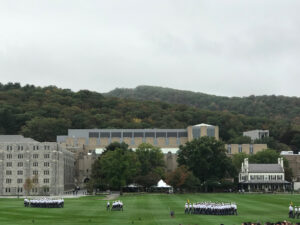
Few are honored nationally, in their state, and locally. Even fewer who lived a brief life of 24 years earn the recognition. We are proud that one such person was an Ypsilantian.
Thanks to David Arvin, Merry Lynn Brondos, Charles Kettles, Jay Baxter, and Tino Lam- bros for providing pictures, memories, and to references from:
West Point Assembly, September 1983.
West Point Assembly, July 1989.
The Ann Arbor News, July 8, 1989.
The Ann Arbor News, May 27, 2002.
Speech to Captain C. Robert Arvin Foundation, June 27, 2008.
[Bill Nickels is a member of the Ypsilanti Historical Society, a constant volunteer, and a regular contributor to GLEANINGS.]
